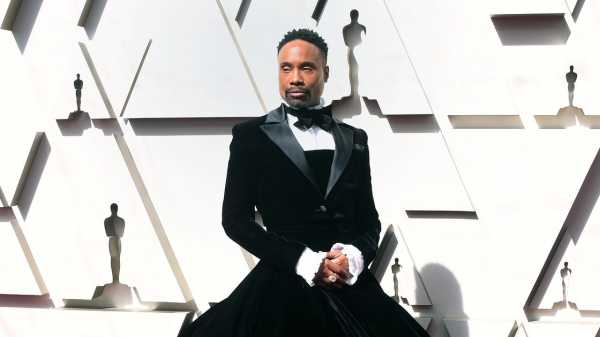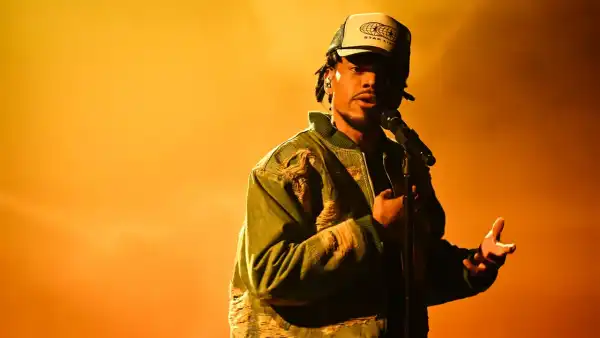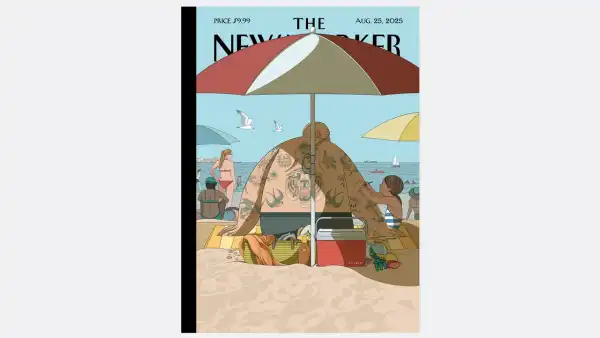
Whenever friends tell me they are feeling blue, I tell them to take a weekend, stock up on cold seltzer, and binge “Pose.” The show, which aired on FX last year, takes place in the spangled, sparkling demimonde of the New York drag-ball scene in the nineteen-eighties, where glamour met house music met vibrant queer expression met a hot-glue gun and a prayer. The show is a Funfetti cake of visual pleasure, and one of the highlights is Billy Porter, who plays the ballroom m.c. Pray Tell, barking orders from the stage in neon-green suits and enormous fedoras. Porter, who also has had major success on Broadway (he won a Tony for playing the drag queen Lola in “Kinky Boots”), has been making the most of the press circuit for his show’s début season, working every red carpet that he has appeared on this year with a zeal and creativity that makes everyone else look drab. At the A.F.I. Awards, in January, Porter wore a floor-length gown the color of farm-fresh egg yolks beneath a golden blazer. At the Golden Globes, two days later, he wore a hot-pink cloak, displaying the garment like a bird of paradise flapping its way through a mating dance. And, at the Critics’ Choice Awards, he wore a chocolate satin suit with a comically oversized soft-peach bow at the hip, a fanciful caricature of a cummerbund.
On the Oscars red carpet, on Sunday night, Porter managed to outdo himself yet again. He wore a “tuxedo gown” by the designer and “Project Runway” winner Christian Siriano, a sumptuous collision of butch-femme aesthetics. The top half of the outfit fit like a traditional men’s tuxedo, in plush black velvet, with oversized satin lapels; the bottom half, also an inky river of velvet, flared out into a massive bell skirt. His torso looked like it was smoking a cigar with a brandy, while his skirt looked like it was ready for a gothic Victorian-era coronation. Porter, who interviewed celebrities on the red carpet as part of ABC’s pre-show special, was one of the first people to arrive, and his dramatic look felt like a dare to everyone who would follow.
In his red-carpet work, Siriano has made a concerted effort to dress queer artists, plus-size bodies, and women of color, offering celebrities who have felt ignored or excluded from the world of high fashion a chance to drape themselves in old-Hollywood glamour. In 2016, the actress Leslie Jones tweeted that no designers wanted to dress her for the premier of “Ghostbusters.” Siriano came to the rescue, and Jones’s off-the-shoulder red gown became a coveted item—“we sold hundreds of that red gown,” Siriano later said.
In a piece for Vogue about his Oscars outfit, Porter recalled approaching Siriano at the after-party for the designer’s most recent fashion show. He had learned that he’d be hosting a pre-Oscars show for ABC, and he asked Siriano if he’d make him a gown. (Siriano’s response: “AAAAA-BSOLUTELY.”) Porter wrote that he wanted to wear the gown in order to play with the gender binary, to melt the lines between masculine and feminine that red-carpet conventions tend to reinforce. “My goal is to be a walking piece of political art every time I show up. To challenge expectations. What is masculinity? What does that mean?” Porter’s outfit set a tone for the evening. So much of the history of the Oscars is about good behavior: wearing tasteful, elegant gowns, thanking the right people when you graciously accept your statuette. But, as Richard Brody wrote, in a piece sharing his awards predictions, as long as the Oscars remains a “stodgy, sometimes shticky, backward-looking self-celebration of a wealthy, and mostly white and male, industry,” it will be at risk of becoming irrelevant in a changing world. Stars like Porter, who strutted the red carpet as assistants helped fluff out the hemline of his skirt, are using fashion to show one route forward for the festivities. “People are going to be really uncomfortable with my black ass in a ball gown,” he wrote. “But it’s not anybody’s business but mine.”
Sourse: newyorker.com






